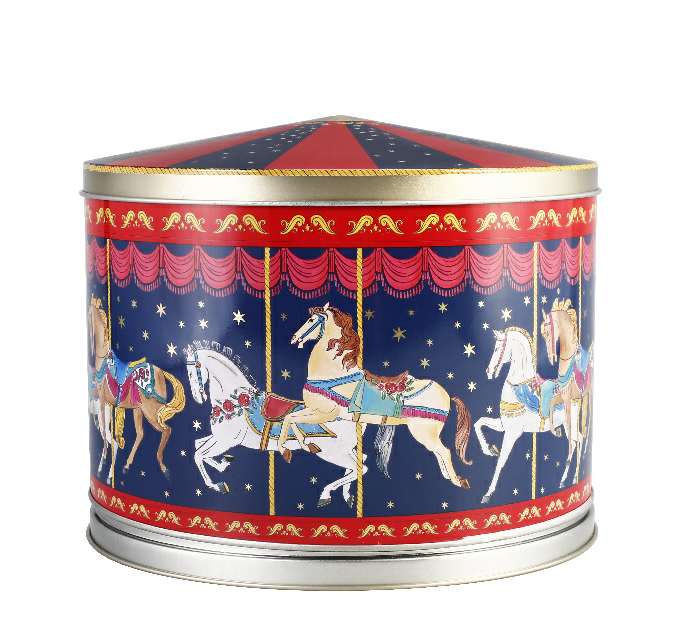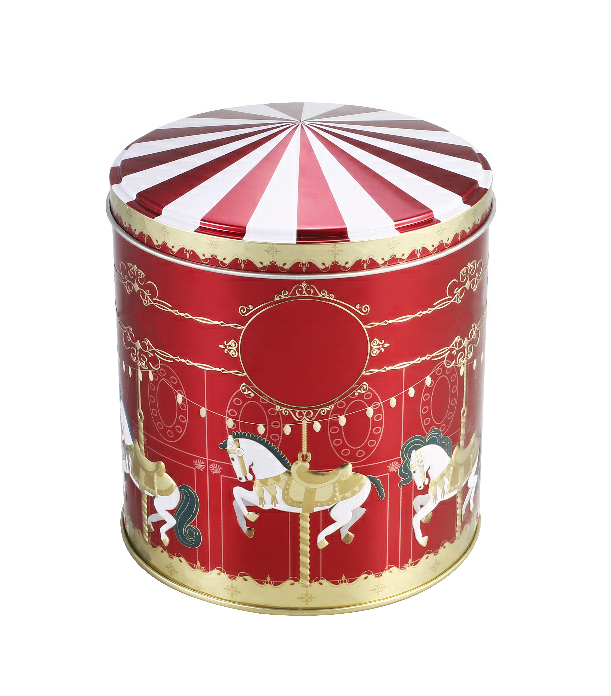Multi-color printing has transformed the packaging industry, particularly in the production of tinplate cans. This technology enables manufacturers to create visually appealing designs that enhance brand recognition and consumer attraction. Multi-color printing encompasses various techniques, including four-color printing, spot color printing, and UV printing, each offering distinct advantages and applications in tinplate can manufacturing.
 At its core, multi-color printing involves applying multiple colors to a single substrate, in this case, tinplate. The most prevalent method is four-color printing, which employs the CMYK color model (cyan, magenta, yellow, and black) to generate a broad spectrum of colors. This technique is highly effective for producing intricate designs and photographic images on tinplate cans. Spot color printing, conversely, utilizes pre-mixed inks to achieve specific colors, making it suitable for designs requiring precise color matching. UV printing is an innovative approach that uses ultraviolet light to instantly cure inks, resulting in vibrant and durable prints. Each of these methods plays a crucial role in enhancing the visual appeal of tinplate cans.
At its core, multi-color printing involves applying multiple colors to a single substrate, in this case, tinplate. The most prevalent method is four-color printing, which employs the CMYK color model (cyan, magenta, yellow, and black) to generate a broad spectrum of colors. This technique is highly effective for producing intricate designs and photographic images on tinplate cans. Spot color printing, conversely, utilizes pre-mixed inks to achieve specific colors, making it suitable for designs requiring precise color matching. UV printing is an innovative approach that uses ultraviolet light to instantly cure inks, resulting in vibrant and durable prints. Each of these methods plays a crucial role in enhancing the visual appeal of tinplate cans.
The application of multi-color printing in tinplate can production involves several key steps. Initially, the design is created using graphic design software, and colors are selected based on the desired outcome. Once the design is finalized, it is transferred to a printing plate and mounted on a printing press. The tinplate sheet is then fed into the press, and the chosen printing technique—four-color, spot color, or UV printing—is applied. Ink is applied in layers to create complex designs. Following printing, the cans undergo a curing process, particularly in UV printing, to ensure proper ink adhesion and the desired effect. 
One of the significant advantages of multi-color printing for tinplate cans is the ability to produce high-quality, vibrant designs that attract consumers. Four-color printing allows for a wide range of colors, enabling the effective reproduction of intricate artwork and brand elements. Additionally, spot color printing ensures accurate representation of specific brand colors, which is essential for maintaining brand identity. However, there are some drawbacks to consider. Multi-color printing can be more costly than single-color printing due to the complexity of the process and the requirement for multiple inks. Furthermore, multi-color printing may necessitate longer setup times, potentially impacting production efficiency.
In conclusion, the utilization of multi-color printing in the production of tinplate cans constitutes a critical component of contemporary packaging strategies. Through the employment of techniques such as four-color printing, spot color printing, and UV printing, manufacturers are capable of generating visually striking designs that significantly enhance product visibility and consumer engagement. Despite the inherent challenges associated with this process, the advantages of vivid coloration and effective brand representation unequivocally surpass the potential drawbacks. As the market demand for aesthetically pleasing packaging continues to escalate, the significance of multi-color printing within the tinplate can industry is poised to expand, facilitating the development of innovative designs and superior consumer experiences.
Post time: Dec-18-2024





